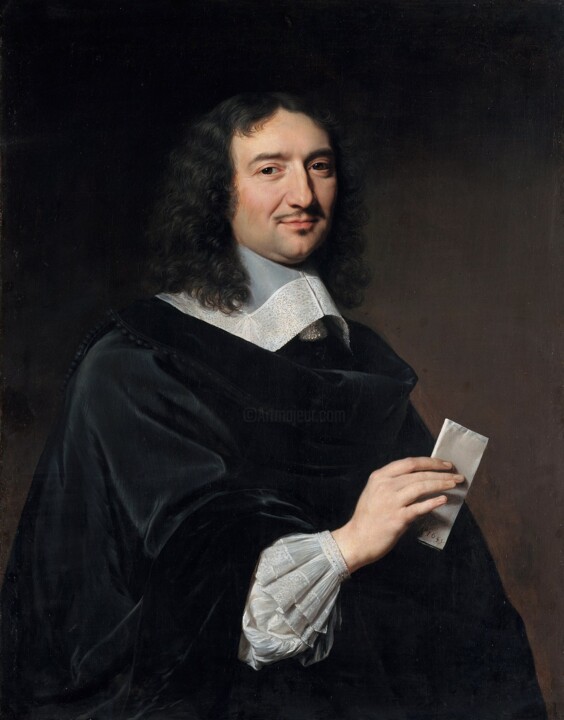


Portrait de Jean-Baptiste Colbert (1655) Painting by Philippe De Champaigne
"Fine-Arts" prints on paper
It is a process of printing on art paper using very high-quality pigment inks and printed in very high definition. Its level of conservation is exceptional (more than 100 years), its quality, depth, and richness of nuances exceeds the classic photo print on Argentic paper.

Glossy finish
Apart from its exceptional thickness, the fiber paper is composed of an alpha-cellulose base without acid and it is covered with barium sulphate, and a microporous layer absorption enhancing pigments during printing. A pure white color, non-yellowing to light, this paper is especially designed for resistance and aging. It is used by major museums worldwide as it offers excellent resolution, rendering deep and dense colors.
Art Print "Fine Art" - Glossy finish on a fiber base paper 325 g.

Our high end prints and reproductions
ArtMajeur only uses natural papers with neutral pH, resistant, and of high quality, selected from renowned papermakers!
Constant attention is paid by our master printer, whether in terms of color control or respect for the graphic chain. Our high level of quality requirement is a major asset of ArtMajeur framed art prints.
For Artists! You help artists to live from their work. They receive royalties everytime you buy their prints.
About our fine prints-
Original Artwork
Painting,
Oil
- Dimensions Height 36.3in, Width 28.5in
- Framing This artwork is not framed
- Categories Classicism Portrait
Related themes
Philippe de Champaigne was a French painter of the Baroque era, born in Brabancon on May 26, 1602 and died on August 12, 1674. He was an important member of the French school. He was one of the founders of the Royal Academy of Painting and Sculpture in Paris. It was the best art school in France in the 18th century. Champaigne was born into a poor family in Brussels (Duchy of Brabant, Southern Netherlands) at the time of Archduke Albert and Archduchess Isabelle. He learned to paint landscapes from Jacques Fouquières. In 1621, he moved to Paris, where he worked on the decoration of the Luxembourg Palace with Nicolas Poussin, under the direction of Nicolas Duchesne, whose daughter he would later marry. Houbraken relates that Duchesne resented Champaigne for being more popular than him at court. This is why Champaigne returned to live in Brussels with his brother and did not return to marry his daughter until he learned of Duchesne's death.[1] After Duchesne's death, Champaigne worked for the Queen Mother, Marie de Medici. He helped Marie de Medici decorate the Luxembourg Palace. In 1638, he made several paintings for Notre-Dame Cathedral in Paris. He also made cartoons that were used on tapestries. He received a pension of 1200 livres and became the Queen's First Painter. He also modified the Carmes church in the Faubourg Saint-Jacques, which was one of the Queen Mother's favorite places of worship. During the French Revolution, this place was destroyed, but some of the original paintings were saved and are now in museums. The Assumption of the Virgin is in the Louvre, the Presentation in the Temple in Dijon and the Resurrection of Lazarus in Grenoble. He also worked for Cardinal Richelieu, whose Palais Cardinal, the dome of the Sorbonne and other buildings he decorated. Champaigne was the only artist allowed to paint Richelieu dressed as a cardinal, which he did eleven times. In 1648, he was one of the first to enter the Academy of Painting and Sculpture. At the end of his life, after 1640, he became a follower of Jansenism. After his paralyzed daughter was cured by a miracle at the convent of Port-Royal, he painted Ex-Voto of 1662, which is now in the Louvre. It shows the artist's daughter with Mother Superior Agnès Arnauld.
-
Nationality:
FRANCE

- Date of birth : 1602
- Artistic domains: Represented by a Gallery,
- Groups: Contemporary French Artists Artists presented by a gallery







